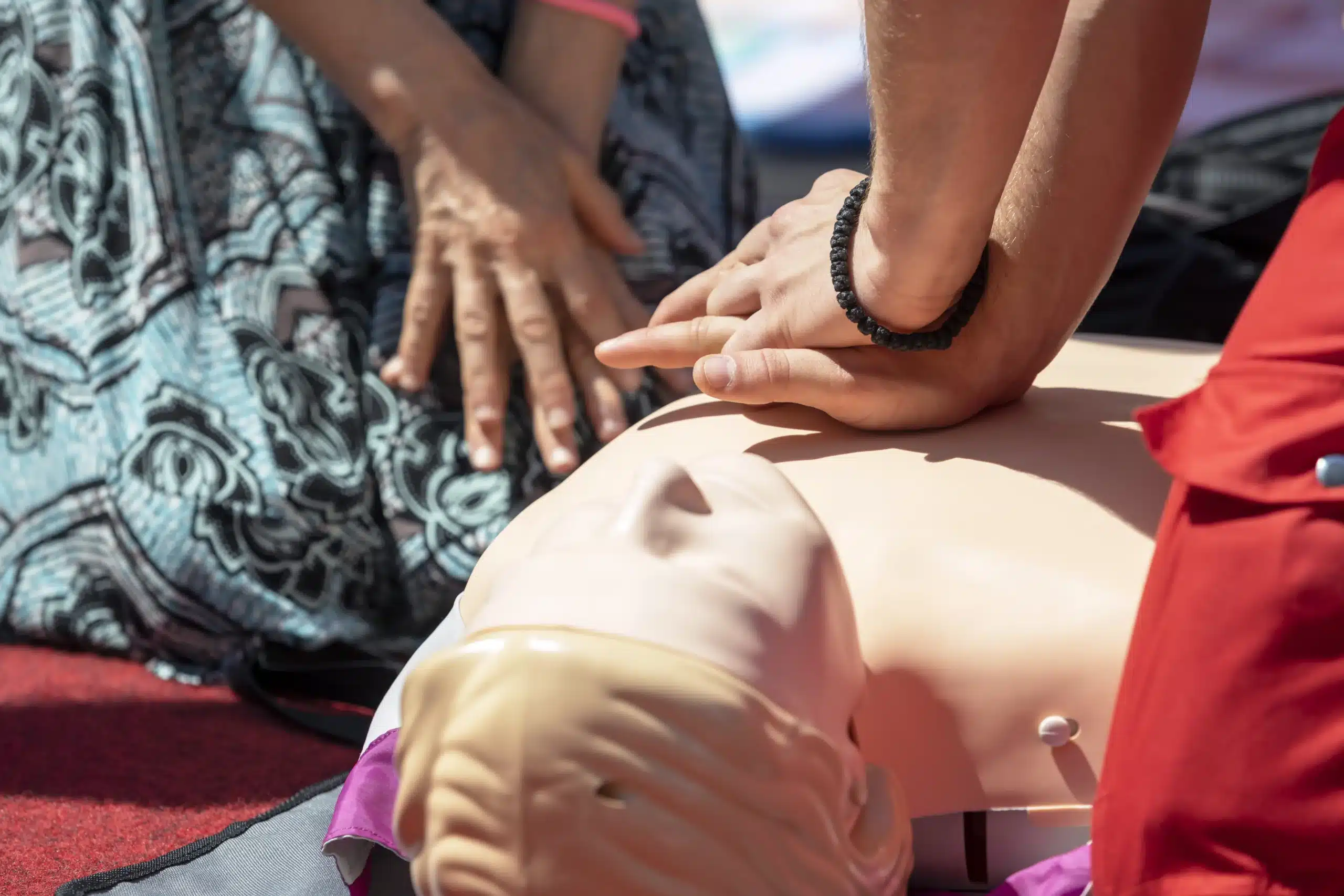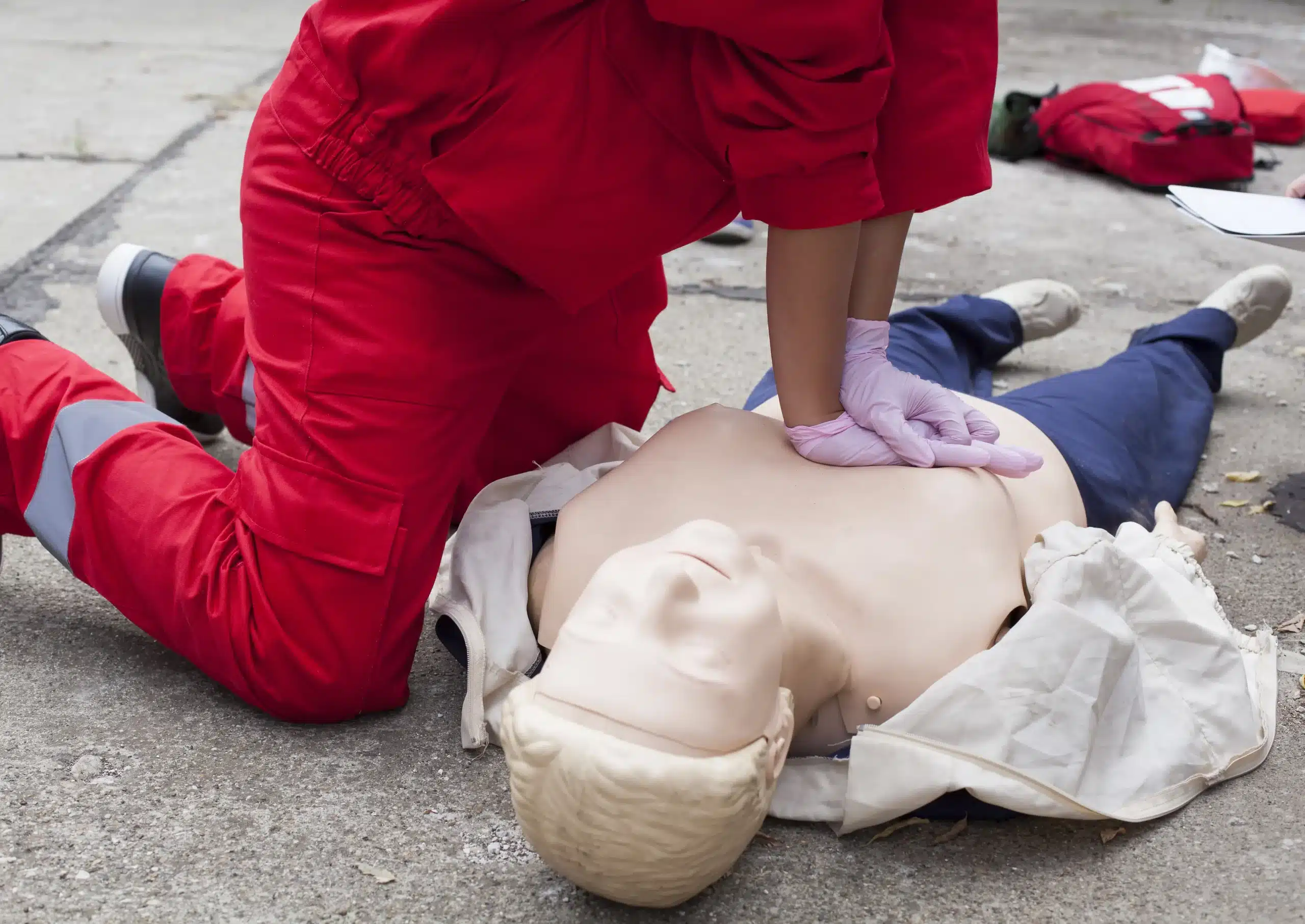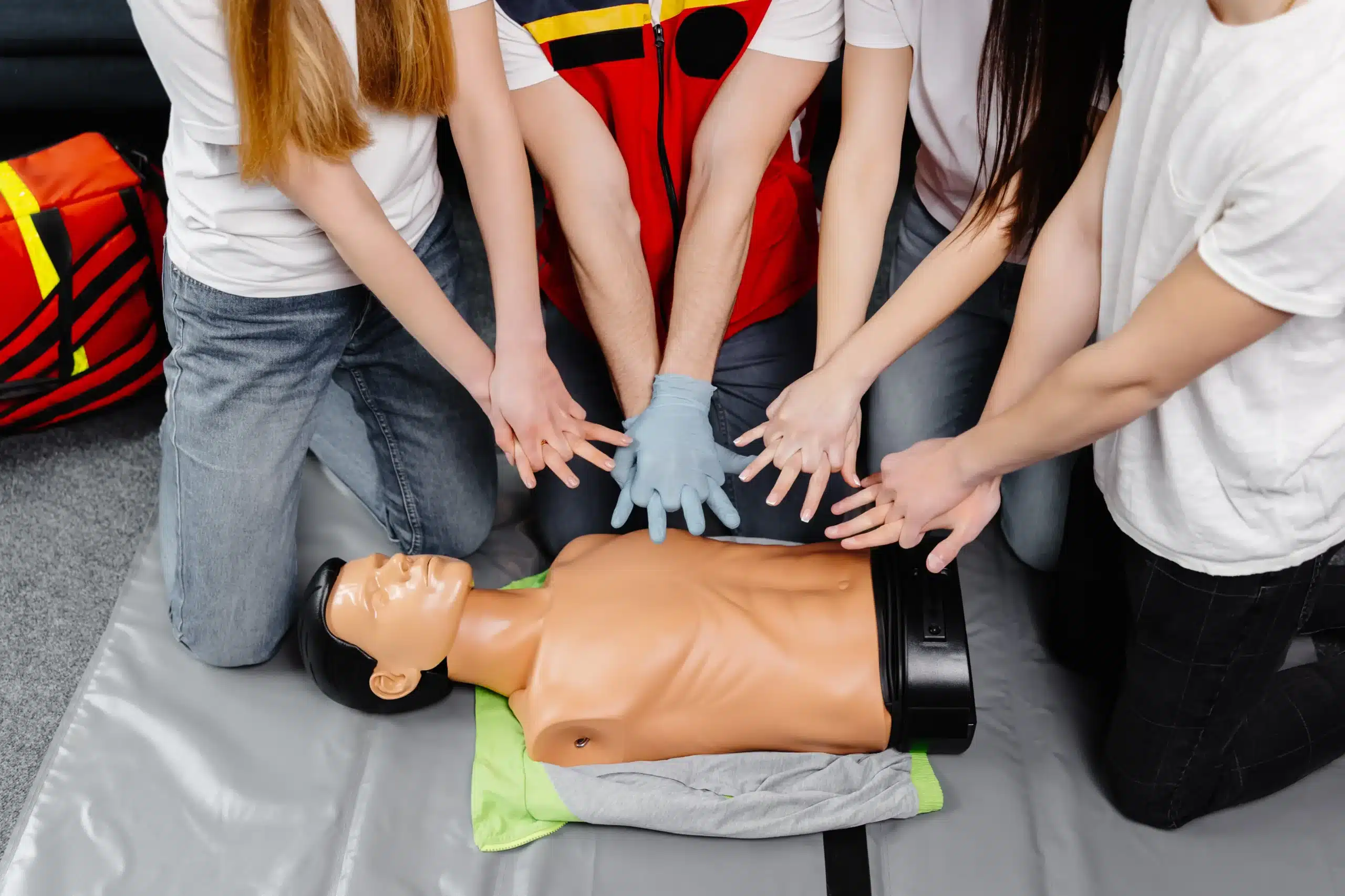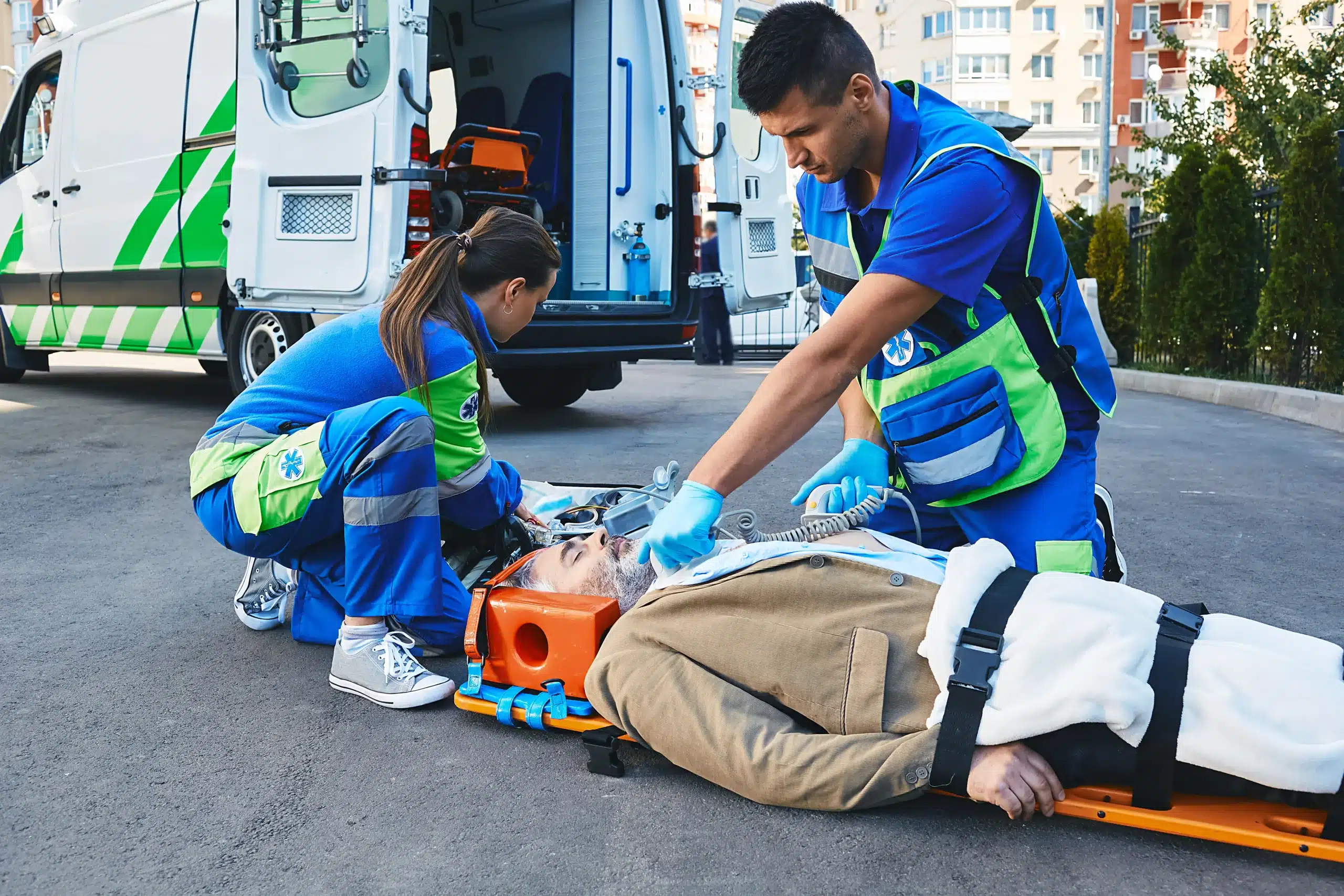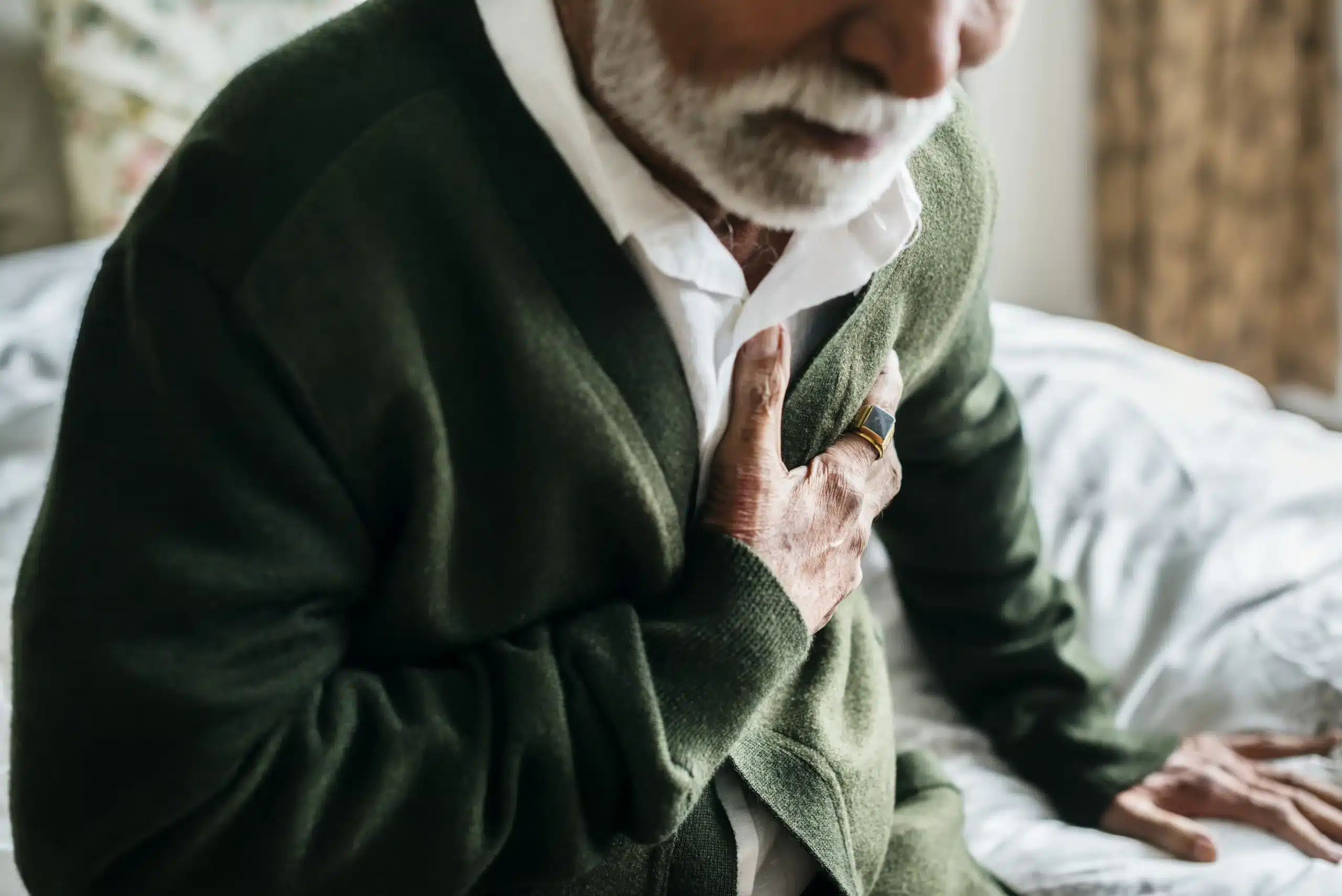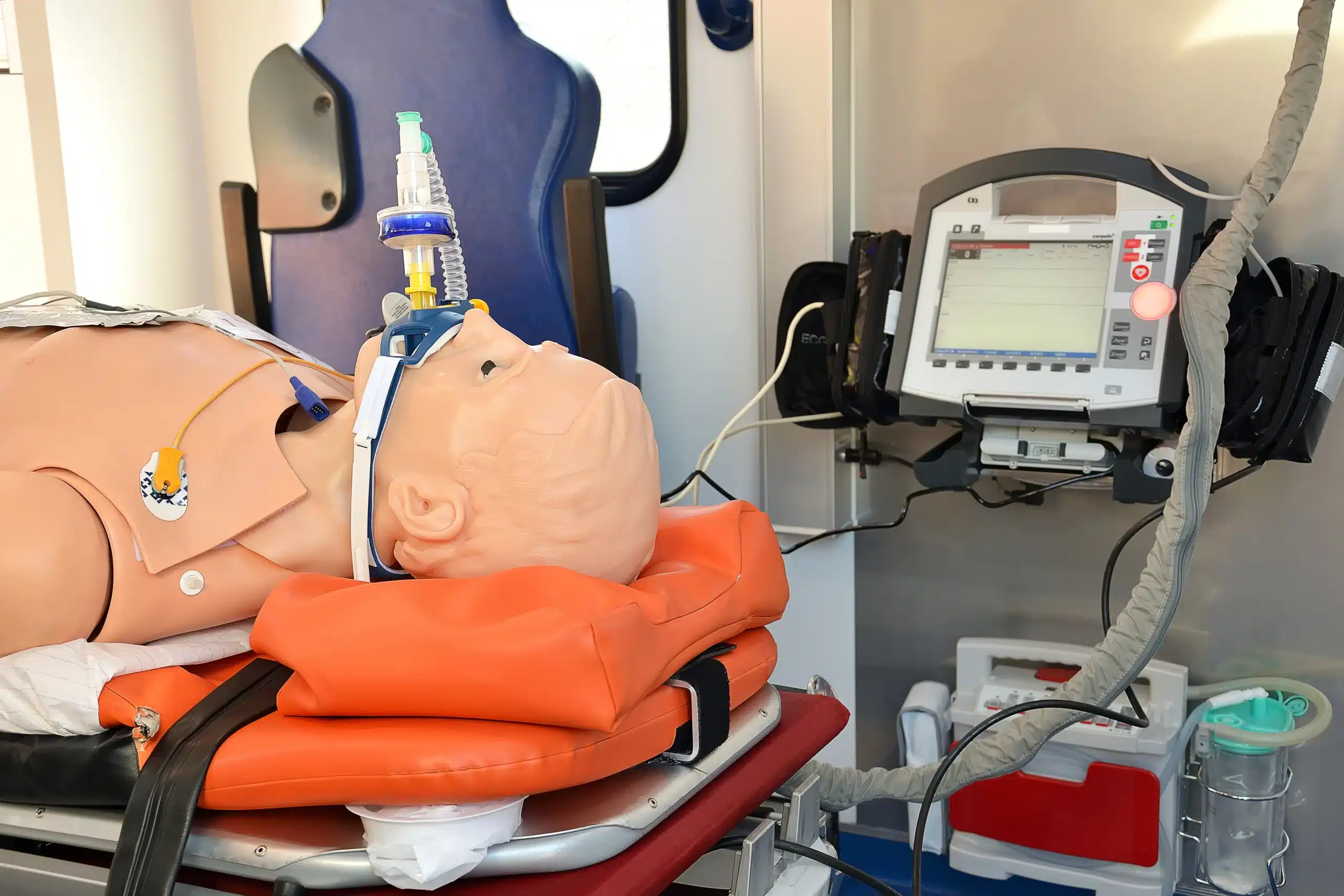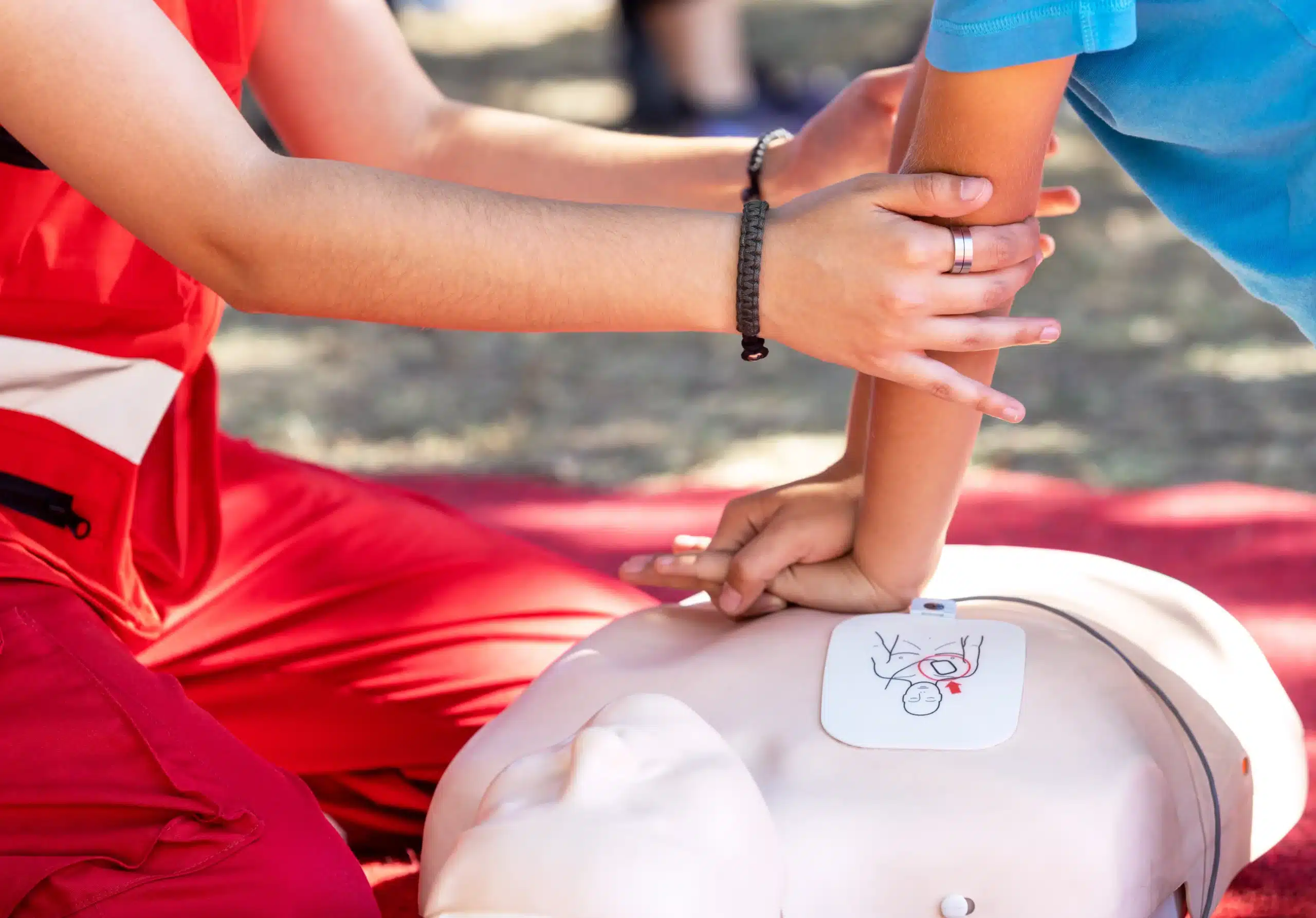Emergencies can happen anytime, anywhere. Would you know what to do? CPR certification equips you with the skills and confidence to respond effectively when every second counts. This comprehensive guide explores the world of CPR training, covering everything from basic CPR to specialized certifications like BLS and ACLS. Whether you’re searching for “CPR certification near me” or want to understand the different types of courses available, this article will help you find the right training to meet your needs and empower you to make a difference.
Key Takeaways
- CPR certification empowers you to act: Knowing how to perform CPR and use an AED can make a real difference in an emergency. Find a course that aligns with your personal or professional goals, such as BLS for healthcare providers or Heartsaver CPR for the general public.
- CPR training is accessible and flexible: Choose from various learning formats, including in-person classes, online modules, or blended learning, to fit your schedule and preferred learning style. Local resources and online directories can help you find a course near you.
- Stay prepared by keeping your skills current: CPR guidelines and best practices evolve. Renew your certification every two years and consider periodic refresher courses to maintain your skills and confidence, ensuring you’re always ready to respond effectively.
What is CPR Certification?
CPR certification proves you can perform cardiopulmonary resuscitation (CPR) and use an automated external defibrillator (AED) in emergencies. It’s important for healthcare professionals and anyone who might face an emergency at home or work. With CPR training, you gain life-saving skills to respond effectively when every second counts.
The American Heart Association (AHA) offers a variety of CPR courses designed for different needs. For example, the Heartsaver course is a good fit for non-medical professionals who want to be prepared. These courses teach essential, potentially life-saving skills and knowledge. CPR and first aid certification classes come in several formats—in-person, online, and blended learning—so you can find one that suits your schedule and learning style. Certification is typically valid for two years. Renewal courses are available to keep your skills sharp and ensure you’re following the latest guidelines.
CPR Certification Courses
Choosing the right CPR certification course depends on your specific needs and goals. Whether you’re a healthcare professional or want to be prepared for emergencies at home, there’s a course for you. Let’s explore some of the most common CPR certification courses available.
BLS (Basic Life Support)
The Basic Life Support (BLS) course provides the essential skills needed to respond to life-threatening emergencies. It’s designed for healthcare providers, including doctors, nurses, paramedics, and other professionals in clinical settings. BLS certification covers core techniques like CPR, using an AED (automated external defibrillator), and relieving choking. It emphasizes teamwork and high-quality CPR in both pre-hospital and in-facility environments. If you’re pursuing a career in healthcare, BLS certification is often a requirement.
Heartsaver CPR
Heartsaver CPR is a great option for those who aren’t healthcare professionals but still want to learn life-saving skills. This course teaches you how to perform CPR on adults, children, and infants. It also covers how to use an AED and what to do if someone is choking. Heartsaver CPR is ideal for teachers, coaches, parents, babysitters, and anyone who wants to be prepared for an emergency. This course empowers you to confidently respond to emergencies and potentially save a life.
Pediatric CPR
For parents, caregivers, teachers, and others who regularly interact with children, Pediatric CPR training is invaluable. This course focuses specifically on CPR and first aid techniques for infants and children. You’ll learn how to recognize the signs of choking and cardiac arrest in young ones and how to respond effectively. These specialized skills can make a critical difference during an emergency. For a broader skillset, consider also exploring the EMSA Child Care Health & Safety program, which delves into comprehensive childcare health and safety practices.
First Aid & CPR
Combining CPR training with first aid knowledge provides a well-rounded skill set to handle various emergencies. A First Aid & CPR course teaches you how to respond to common injuries like cuts, burns, and fractures, in addition to performing CPR and using an AED. This comprehensive approach prepares you to provide immediate assistance in a wider range of situations. It’s a valuable choice for anyone who wants to be prepared, from workplace safety officers to concerned family members.
Find CPR Certification Near You
Finding the right CPR certification course shouldn’t feel overwhelming. Whether you prefer online learning or in-person instruction, several paths can help you find a course that fits your needs and schedule.
Online Search
A quick online search for “CPR certification near me” is a great place to start. You’ll find resources like the American Red Cross, which offers various CPR training courses, including online, in-person, and blended learning. Keep in mind that online-only CPR certifications may not satisfy all employer requirements. Many jobs, especially in healthcare, often require hands-on, in-person training. Always check with your employer or licensing board to confirm the course meets their standards.
Local Resources
Local resources can be incredibly helpful. For example, if you’re in Tracy, CA, training providers like Safety Training Seminars offer in-person CPR, BLS, ACLS, PALS, and First Aid certification. These local providers often have flexible scheduling and cater to community needs. Learning alongside others in your area can also foster a sense of community and create networking opportunities.
Community Partners
Community partners, such as local hospitals, community centers, or schools, often host CPR training sessions. Organizations like the American Heart Association offer resources like the Heartsaver Pediatric First Aid CPR AED course, designed to teach participants how to respond to and manage illnesses and injuries in children and infants. Many training centers also offer combined CPR and First Aid courses, a convenient and cost-effective way to gain comprehensive life-saving skills.
CPR Certification: Cost & Value
Getting CPR certified is an investment in yourself and your community. Let’s break down the costs associated with CPR training and discuss why it’s such a valuable skill.
Average Costs
CPR certification costs vary. Expect different price points depending on the course type (CPR/AED, Basic Life Support (BLS), Advanced Cardiovascular Life Support (ACLS), or Pediatric Advanced Life Support (PALS)) and whether you choose in-person, online, or blended learning. Safety Training Seminars offer various CPR and first aid classes in Tracy, CA, to give you a sense of local pricing.
Factors Affecting Cost
As mentioned, the specific course type influences the cost. A basic CPR/AED course will typically cost less than a more specialized course like ACLS or PALS. The training format also matters. In-person classes often include equipment fees and instructor time, which can impact pricing, while online courses may have lower overhead. Combined CPR and First Aid courses are sometimes available, offering a way to gain multiple certifications at once.
Discounts
Many CPR training providers offer discounts, making these valuable courses more accessible. Look for promotions, especially for group registrations. Some providers, including Safety Training Seminars, offer reduced rates for group classes and combined certifications. Always ask about potential discounts when you contact a training center.
Course Length & Format
CPR course formats vary depending on your needs and learning style. Let’s break down the most common options: in-person, online, and blended learning. Understanding the differences will help you choose the best fit.
In-Person Classes
In-person CPR classes offer hands-on training and direct interaction with an instructor. This format allows you to practice skills and ask questions in real-time. In-person training typically leads to a two-year certification that meets OSHA requirements for many workplaces. If your job requires CPR certification, confirm that an in-person class meets the specific criteria.
Online Courses
Online CPR courses offer flexibility and convenience, allowing you to learn at your own pace. However, online-only courses do not fulfill workplace certification requirements because they lack hands-on training. While a fully online course can refresh your knowledge or introduce you to the basics, it won’t provide the practical skills assessment needed for a workplace-recognized credential. If you need certification for your job, consider a blended learning format or a traditional in-person class.
Blended Learning
Blended learning combines online learning and in-person skills practice. You complete the cognitive portion online at your own pace, then attend a shorter in-person session for hands-on training, skills assessment, and testing. Tracy CPR Classes offers the RQI program, a popular example of blended learning. This format is ideal for busy professionals or those who prefer a flexible approach. Many CPR training providers also offer discounts and promotions, so keep an eye out for opportunities to make these valuable courses more accessible.
What Happens in a CPR Class?
CPR classes blend theory and practice to equip you with lifesaving skills. Here’s a glimpse of what you can expect:
Course Content
CPR classes cover the essentials of recognizing cardiac arrest and providing assistance. You’ll learn how to perform CPR on adults, children, and infants, including chest compressions and rescue breaths. The curriculum also includes training on using an Automated External Defibrillator (AED) and how to help someone who is choking. Many courses, like those offered by the American Red Cross, integrate training for various emergencies, such as responding to opioid overdoses.
Hands-on Practice
Hands-on practice is the cornerstone of effective CPR training. You’ll work with mannequins to practice chest compressions, rescue breaths, and proper AED placement. This practical experience builds your muscle memory and confidence, ensuring you can perform these skills effectively under pressure. For example, BLS CPR courses often involve a skills testing session after completing online coursework. Some programs, like RQI, offer a flexible approach where you complete the cognitive portion online at your own pace and then attend a shorter in-person skills session for hands-on practice and evaluation. You can find out more about these options through your local CPR training centers.
Assessment & Certification
To receive your CPR certification, you’ll need to demonstrate your skills and knowledge. This typically involves a skills test where you perform CPR and use an AED on a mannequin. Upon successful completion, you’ll receive a certification card, such as the American Heart Association Heartsaver certification, which is usually valid for two years. Remember to check the specific requirements and renewal process for your chosen course. Tracy CPR Classes offers a variety of CPR courses and can guide you through the certification process.
Reputable CPR Organizations
Finding the right CPR certification course means choosing a respected provider. Several organizations offer high-quality, accredited CPR training programs. Here are a few key players to consider when you find a CPR class:
American Heart Association (AHA)
The American Heart Association is a leading authority on CPR and emergency cardiovascular care. Their Heartsaver courses cater to people with little or no medical experience who need CPR and first aid training for their jobs or other requirements. The AHA also offers advanced courses like BLS, ACLS, and PALS for healthcare providers. AHA certification is widely recognized and accepted.
American Red Cross
The American Red Cross is another well-known and trusted source for CPR training. They offer various learning formats, including in-person classes, online modules, and blended learning options that combine online and in-person instruction. Red Cross CPR certification is generally valid for two years.
Tracy CPR Classes
For those in the Tracy, California area, Tracy CPR Classes offers a convenient and community-focused approach to CPR training. They provide American Heart Association (AHA)-certified courses, ensuring your training meets nationally recognized standards. Serving Tracy, Stockton, and Lodi, they offer various courses, including BLS, ACLS, PALS, and specialized training like the EMSA Child Care Health & Safety program. Tracy CPR classes also offers RQI training for healthcare professionals.
National Safety Council (NSC)
The National Safety Council provides CPR and first aid training programs designed for individuals and organizations. Their courses focus on equipping participants with practical skills to respond effectively during emergencies. The NSC offers a range of courses to suit different needs and experience levels.
Benefits of CPR Certification
Getting CPR certified offers a range of benefits, from personal empowerment to career advancement and positive community impact. It’s a valuable investment in yourself and the well-being of those around you.
Personal Empowerment
CPR certification empowers you to take action during emergencies. Instead of feeling helpless, you’ll have the confidence to step up and potentially save a life. This training transforms fear into action, equipping you with the skills and knowledge to respond effectively. Tracy CPR Classes offers high-quality training based on the latest American Heart Association guidelines, ensuring you’re prepared for various emergency situations.
Professional Advantages
In many healthcare and related professions, CPR certification is a requirement. It demonstrates your commitment to patient safety and enhances your professional credentials. Even if it’s not mandatory, having current CPR certification can give you an advantage in the job market. It signals to employers that you’re prepared to handle critical situations and prioritize safety. Training courses are readily available throughout Tracy and nearby cities.
Community Impact
Learning CPR allows you to make a real difference in your community. You become a valuable resource, equipped to respond to emergencies and provide immediate assistance. Success stories highlight the profound impact of timely intervention and the importance of being prepared. These real-life examples demonstrate how CPR-certified individuals can save lives and strengthen their communities.
Choose the Right CPR Course
Picking the right CPR course is a big decision. It’s important to find one that fits your specific needs, whether you’re aiming for personal knowledge or professional certification. Here’s how to find the perfect fit:
Assess Your Needs
First, think about why you want CPR certification. Are you a healthcare provider needing ACLS or PALS? Are you a parent or caregiver looking for basic CPR and First Aid training? Or maybe your workplace requires it. Understanding your goals will help you narrow down the options. For those in and around Tracy, California, local providers like Tracy CPR Classes offer a variety of courses, including BLS, CPR, and First Aid.
Compare Courses
Once you know what type of certification you need, compare courses. Costs vary based on the course type and format (in-person, online, or blended). A basic CPR/AED course will likely cost less than a more advanced BLS course. Also, consider a combined CPR and First Aid course, which can be a more efficient way to learn both. Check the CPR class directory for Northern CA for a comprehensive list.
Verify Accreditation
Finally, ensure any course you choose is accredited by a reputable organization like the American Heart Association (AHA). This ensures the training meets industry standards and is widely recognized. Many training centers in Tracy offer AHA-certified courses. Tracy CPR Classes, for example, is a woman-owned AHA Training Center offering high-quality instruction and two-year certifications. Verifying accreditation is crucial for choosing a CPR course that provides the skills and credentials you need.
Maintain Your CPR Certification
Earning your CPR certification is a significant achievement, but staying current with your skills is essential for providing effective assistance in emergencies. Knowing how to perform CPR can truly make a difference, but those skills can diminish over time. Regularly refreshing your knowledge and techniques ensures you’re always prepared to respond quickly and confidently.
Renewal Requirements
CPR certifications, such as those from the American Heart Association and the American Red Cross, generally remain valid for two years. Check your certification card to confirm the specific expiration date. Renewal courses are widely accessible and are often shorter than the initial certification class. They cover essential updates and provide opportunities to practice your skills. Don’t let your certification expire—register for a renewal course in advance. At Tracy CPR Classes, we offer a variety of renewal courses to fit your schedule and needs.
Continuing Education
Even if your certification hasn’t expired yet, consider participating in refresher courses periodically. Research suggests that CPR skills can decline within months, potentially affecting your effectiveness during a real emergency. Regular practice through refresher courses helps maintain muscle memory and keeps your skills sharp. This ongoing training builds confidence and reinforces best practices, ensuring you can deliver high-quality CPR when it’s needed most. Visit our website to explore the refresher courses available at Tracy CPR Classes.
Stay Current with Guidelines
Guidelines for emergency cardiovascular care are constantly evolving as medical research progresses. Staying informed about the latest recommendations from organizations like the AHA is vital for delivering effective CPR. These updates frequently include new techniques and best practices to improve outcomes. For instance, the AHA’s Heartsaver First Aid CPR AED courses incorporate the latest science and educational material from the 2020 AHA Guidelines for CPR and Emergency Cardiovascular Care (ECC). By keeping current with these changes, you can ensure your CPR techniques align with current best practices, maximizing your ability to save a life. Tracy CPR Classes stays informed about the latest guidelines to ensure our courses provide you with the most current and effective training.
Related Articles
- Why CPR is More Important Than Ever
- CPR Courses in Tracy: Your Complete Guide – Tracy CPR Classes
- CPR Renewal in Tracy: Your Complete Guide – Tracy CPR Classes
- CPR Training in Tracy: Your Complete Guide – Tracy CPR Classes
- CPR Certification in Stockton: Your Complete Guide – Tracy CPR Classes
Frequently Asked Questions
How do I choose between BLS and Heartsaver CPR?
BLS (Basic Life Support) is designed for healthcare providers and those in clinical settings, covering CPR, AED use, and choking relief with a focus on teamwork and high-quality CPR. Heartsaver CPR, on the other hand, is geared towards non-medical professionals like teachers, coaches, and parents, teaching CPR for adults, children, and infants, along with AED use and choking response. The best choice depends on your professional needs and whether you work in a healthcare setting.
What if my employer requires hands-on CPR training?
Many employers, especially in healthcare, require hands-on training for CPR certification. Fully online courses typically don’t meet these requirements. Look for in-person classes or blended learning options that combine online coursework with in-person skills sessions and testing. Always confirm with your employer or licensing board to ensure the course you choose meets their specific standards.
Are there discounts available for CPR certification courses?
Yes, many CPR training providers offer discounts, often for group registrations or combined courses (like CPR and First Aid). Always inquire about potential discounts when contacting a training center. Local providers, like those found in a community CPR directory, may also have special offers.
How often do I need to renew my CPR certification?
Most CPR certifications are valid for two years. Check your certification card for the exact expiration date. It’s a good idea to register for a renewal course well in advance to avoid any lapse in certification.
What is the value of learning CPR and First Aid beyond professional requirements?
Even if not required for your job, CPR and First Aid training empowers you to respond effectively in emergencies, potentially saving lives at home, work, or in your community. It builds confidence and equips you with essential skills to assist others in critical situations. It’s a valuable asset for anyone, regardless of profession.
